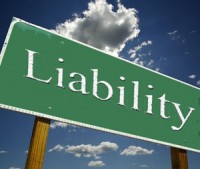
Barbara Ann Hollier Trust v. Shack (Nev. Supreme Ct. – Aug. 6, 2015)
The issue is whether the filing of a postjudgment motion that tolls the time to appeal also tolls NRCP 54(d)(2)(B)’s 20-day deadline to move for attorney fees.
Nicolle and her father, William (the Shacks), doing business as Kids Care Club, entered into a “Lease Option Agreement and Contract of Sale” (the lease) with Acadian Realty, Inc. Under the terms of the lease, the Shacks rented a commercial property in Las Vegas (the property) for three years. Upon execution of the lease, the Shacks owed $100,000 for a security deposit and $100,000 in option money. The nonrefundable $100,000 in option money acted as consideration for Acadian Realty not selling the property during the three-year lease and could be applied against the purchase price later if the Shacks chose to purchase the property.
Nicolle leased the property with the intent of opening and operating a child daycare facility, but the property needed extensive work prior to opening. During the reconstruction, the Shacks encountered numerous problems, which included asbestos, electrical wiring not being up to code, and the property not being connected to the Las Vegas valley water line. During this process, tensions between the parties rose and reached a breaking point when, according to the Shacks, Lawson, the owner of Acadian Realty, refused to sign documents required by the City of Las Vegas in order for construction to be completed.
The first trial
The Shacks filed a complaint against Acadian Realty, the Barbara Ann Haler Trust (the actual owner of the property), and Lawson, both individually and as the trustee of the trust (collectively referred to as Lawson). In June 2008, the parties proceeded to trial on the Shacks’ claims for breach of contract and breach of the implied covenant of good faith and fair dealing and Lawson’s counterclaims for breach of contract, intentional misrepresentation, and abuse of process.
Following the conclusion of the trial, but before the jury rendered a verdict, the district court dismissed Lawson’s abuse of process claim. The jury, however, already had the verdict form, which included a line for damages related to the abuse of process claim. Nevertheless, the trial judge stated that “if the jury comes back with an award on abuse of process, it will just be stricken.”
During a post-trial hearing regarding the fact that the jury wrongly awarded attorney fees and the abuse of process claim had been dismissed as a matter of law, the district court stated:
At any rate, here’s what I’m going to do. The case is a mess. I mean truly, the case is a mess. How it got that way the Lord only knows, but it’s been a series of one-step decisions at a time . . . . I’m going to order that Mrs. Lawson gets the $100,000 which was required as the second payment for the option money. She complied with her option agreement in that she never listed the property and it was never sold during the term of the lease, so I’m saying just exactly what Mr. Shack said. The money’s in an account; she can pick it up anytime she wants to. So I’m going to enforce what he told us in sworn testimony, so the $100,000 that’s been sitting in some title company or some escrow account somewhere in California gets paid to Mrs. Lawson.
Additionally, the district court affirmed the damages awarded to the Shacks and clarified that the $100,000 going to Lawson would be treated as an offset. Both parties appealed the final judgment along with other orders.
Continue reading “Does filing a postjudgment motion move the deadline for filing a motion for attorney fees?” →










